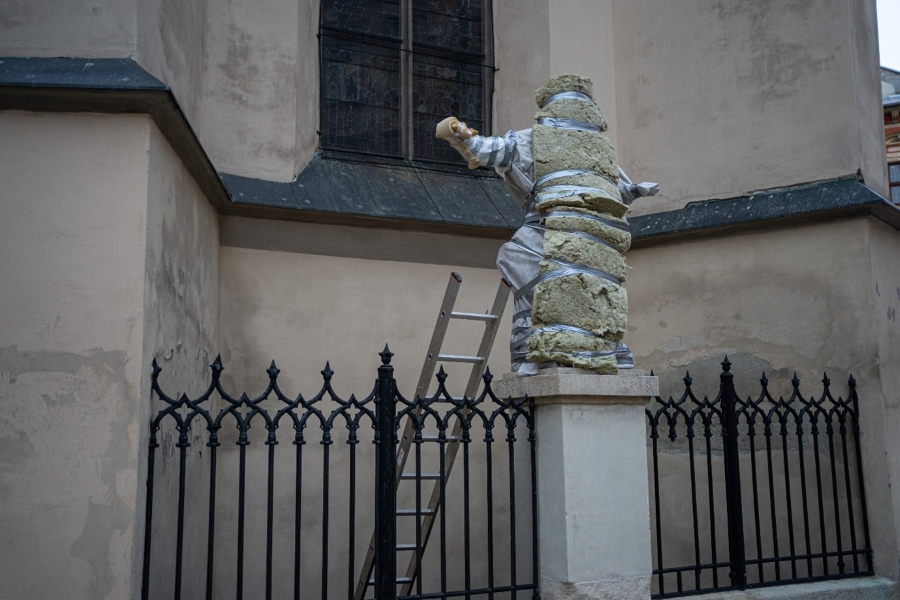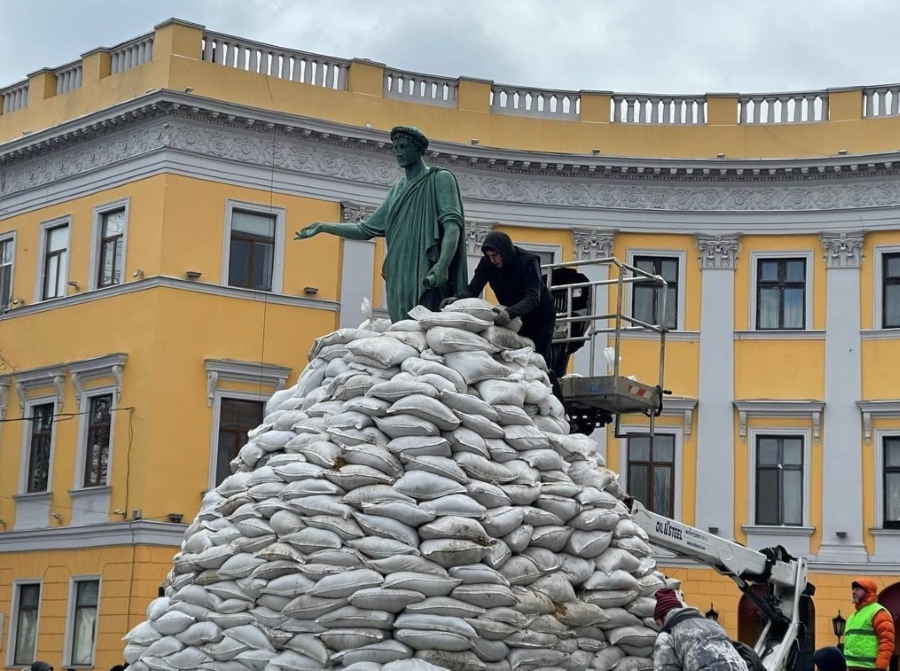When Russia invaded Ukraine it was not only people’s homes that were destroyed. Virtue Worldwide’s Global ECD Innovation Morten Grubak and Creative Director Tao Thomsen share the story of a ground-breaking project that gave Ukrainians the power to help preserve their cultural heritage.
This article is part of a Spotlight series on the impact of the war in Ukraine. Read more
When Russia invaded Ukraine 12 months ago, the people of Ukraine didn’t just fight for their lives and their country.
Thousands of antiquities and monuments were removed from harm’s way or wrapped in bubble wrap and padding to save them from destruction.
The loss of art, and its cultural value, occurs in almost every armed conflict. And often, resources are rightfully dedicated to more pressing things. But maybe that was exactly where we – as a group of creatives – could help.
Inspiration
At the start of the conflict, Søren la Cour Jensen (Chair of Blue Shield Denmark) said, “Destroying a country’s cultural heritage is the fastest way to undermine its national identity.”
This statement was the catalyst that propelled us into action. It epitomised what the Kremlin was trying to do. And we decided to try to stop this from happening in Ukraine.
Every day, more monuments were being destroyed. More civilians put themselves in danger by attempting to remove them physically from harm’s way. And many of those items were practically immovable, leaving them vulnerable to destruction despite the best efforts of Ukrainian citizens.


But 3D scanning could save the artefacts digitally and act as a blueprint to rebuild them in the future. The only problem was that it was expensive, time-consuming, and hard.
That is, until we discovered a mobile technology from the startup Polycam that could create the same kind of 3D renderings that used to be reserved for professionals using just a phone.
Strategy
We started work on Backup Ukraine at the beginning of April 2022, and it took us two weeks to get the idea from the initial conceptual stages into production and out into the world. We were fortunate to be working with a multinational team here at Virtue, so we worked around the clock across time zones for a period of two weeks.
Blue Shield’s preservation experts were invaluable in challenging the framework of the app. They had us walk through every step and pointed out optimization areas where we could accommodate the high standards needed to archive a country’s culture. By bringing on board organisations with a deep knowledge of the field of museum security and archival science, we were able to make crucial tweaks that we never would have thought of. And Polycam showed remarkable dedication in reprogramming their platform to suit.
We contacted the local press in Ukraine so that people on the streets in Kiev and Odessa could know about the project and start to volunteer. As word got out, scans of the infrastructure and cultural monuments flooded in along with, perhaps more surprisingly, more personal objects – the slide in a child’s playground or a woman asleep in bed. As important as culture is – and it is profoundly important – we saw that people were also trying to preserve the individual, small and precious moments that matter to them in their own lives.
Results
This is the first war to be documented using digital scanning technology, so we are constantly learning as we go and as the project evolves. To date, Backup Ukraine has been downloaded over 50,000 times across Android and iOS devices in Ukraine; and that number continues to grow.
Through the creative application of extended reality (XR), we enabled a nation to put the action back into digital activism. We gave citizens a way to take part in a cause and directly influence it, rather than relying on typical calls to action such as signing a petition or giving a donation. This technology has bridged the gap between the physical and the digital and has enabled people to interact directly with a cause. Perhaps this model is a more logical way to think of cause-driven creative campaigns moving forward.
Before the use of XR technology, volunteers were limited to documenting change. But now, they can facilitate it. Rather than using emails, petitions, or tweets, XR technology puts tools in the hands of civilians and enables what were once audiences to become active volunteers. Technology has enabled us to cut out the intermediary and empower those most in need of agency. A major reason for the success of this campaign was the amazing partners we collaborated with. They were all willing to undertake a non-profit project that required a lot of input and time from their teams – and they did so to the highest standards, going above and beyond to ensure the app was right in record time.
Looking ahead
Backup Ukraine started at a time when there was very little hope. Two months had passed since Russia had invaded, and the loss of life and destruction was, and continues to be, horrifying.
The initiative was designed to be a small act of defiance for the people of Ukraine, to enable them to take back control of one part of the war while attempting to preserve precious parts of their history and culture.
Eventually, we hope the digital assets collected through Backup Ukraine will be able to inform the next iteration of the project accurately and function as blueprints for the rebuilding process.
Perhaps one day this, or something like it, will be used as a tool to protect everyone’s cultural heritage, a way to create a digital Noah’s Ark for the world’s culture so it can be safeguarded against natural disasters and wars.
This is Virtue and UNESCO’s shared hope. And if it can be done in a war – why shouldn’t it work everywhere?
Read more in this Spotlight series
The impact of the Ukraine War: One year on
Catherine Driscoll
WARC
How our industry has responded to the war in Ukraine
Stephen Woodford
Advertising Association
Reactions to the Russian invasion of Ukraine: Analysis of consumer conversations and commentary
Abhimanyu Kumta
Quantum
What does the Ukraine war mean for marketers? Exploring Germany’s Fear Economy
Dr Peter Steidl, Dr Rafał Ohme, Dr Dorota Reykowska, and Dr Malgorzata Jakubow
Kochstrasse and iCodeX
Russia has lost Soft Power war with Ukraine
Konrad Jagodzinski
Brand Finance

